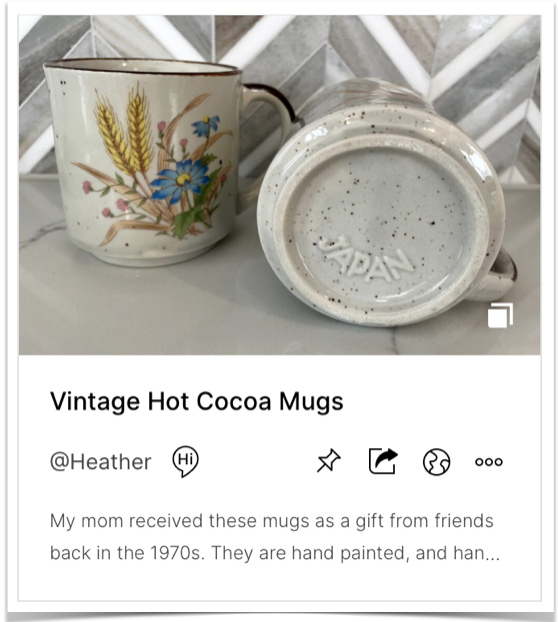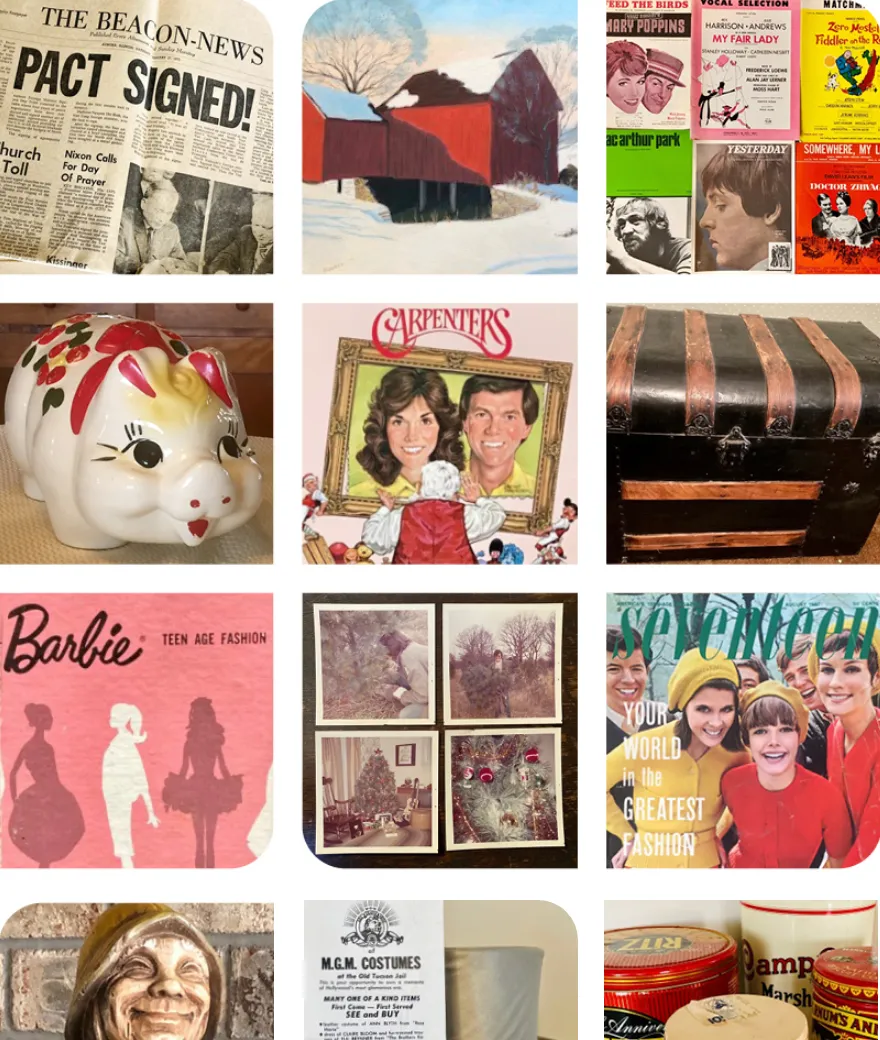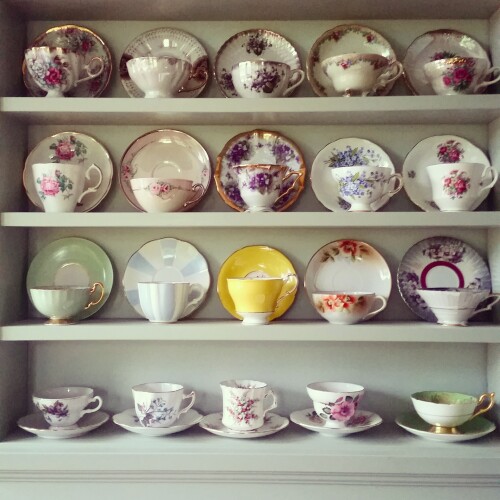Have you ever heard of the Zabbaleens of Egypt? They are a more modern-day version of the ragpickers who took to the streets in major urban centers of London and Paris throughout the 19th century to eke out a living by night to gather and recycle refuse.
In Egypt, the informal Zabbaleen trash pickers charged households a monthly fee to recycle and upcycle 80% and more of the trash that the households of Cairo generated. What could not be sold, most of it the Zabbaleens reportedly fed to their pigs, the pigs being another household income source.
In 2003, according to an article by The Guardian, the estimated 65,000 Zabbaleens lost their livelihoods when the Mubarak government privatized trash collection. Nearly overnight, the dismal results of the privatization became apparent. Collection trucks could not make it through Cairo's narrow streets, trash toppled over, and landfills were overwhelmed. It took a decade, along with the support of Egypt’s Minister of the Environment, to return the Zabbaleens to their work.
Today’s ARTIcles story shares echoes of these lessons and what modern consumer buying behavior, sentiment and expectations combined with the explosion of virtual marketplaces means for home cleanouts for modern day families in the United States.
Modern Day Home Cleanouts
The “why” of a home cleanout, or an estate liquidation, could be the death of a loved one, downsizing with a giant capital D, or perhaps even a life changing relocation. Either way, not all of that ‘stuff’ is coming with you.
And now you have a new task. Because once you’ve separated out what you will keep or give to family and friends, the lion’s share of items that remain, from everyday linens and furnishings to everything you never wanted to sort through in those junk drawers and closets, will be sitting there waiting for you to find it a new home.
And we know how incredibly tempting it is to sweep it up into bins or call a junk hauler to get it over with and move on.
You may not have the time, energy, or know-how to get it all where it needs to go next. And it’s unlikely you keep a virtual rolodex of best fit options to sell, donate, (up)recycle, and trash every item. Cleaning out a home is time consuming, emotionally draining, and physically burdensome work.
And that is exactly why there are professionals who exist to help us all through these challenging situations. What could take you several weeks to months “in your spare time,” could be done in four days or less by a professional. That gives you back your time to focus on selling your home and otherwise moving on.
And let’s be honest, for many of us, having an impartial professional helping us means you’ll have another person helping you let go of those heavy sentimental items. Even if you’re okay with the idea of letting go, actually doing so is often a whole different matter.
HOME CLEANOUTS 101
Once you take out items you and others want to keep, you can simplify your home cleanout by sorting what’s left into into three categories:
-
-
- Sell
- Donate
- Recycle & trash
And the percentage of items each channel represents has transformed dramatically over the last decade.
“Ten years ago, 75% of the items left behind would have been destined for donation,” according to Matt Paxton, author, TV personality, and founder of Clutter Cleaner. The volume headed to donation has dwindled dramatically, supplanted by new, often online, markets for used goods and a desire by many to earn a little cash.
“Now we’re selling 80-90% of the items left behind. I donated less than 100 lbs. on our last job. In the past, it would have been at least a ton if not two (2,000 lbs. to 4,000 lbs.). And now only 500-1,000 lbs. is going to the junk haulers.”
According to Paxton, $8,000 is the average market value for all the stuff left over in the typical home. His estimate is based on his most recent 1,000 cleanouts. “Ten years ago? The attitude was more like, ‘Eh, I’d rather donate it.’ Now every penny counts.”
Matt laughed as he recalled his move in 2019 from Virginia to Georgia, “Want to guess how much money I got for everything? $7,800. That even includes the $300 I got when I sold the couch I slept on my last night in Virginia, because the rest had already been moved out.”
The Future is Resale
The future of resale looks rosy, not only because of burgeoning virtual marketplaces but also anticipated trade policies under the current US administration. If prices go up on new goods, especially new goods of debatable quality, people will turn to secondhand goods.
Do you want to pay 50% more for a poor-quality new item or go vintage/used? It’s not unlike houses, where inferior new-build homes can fail to hold value compared to well-built brick homes of old. Add to that the strong vintage and upcycle alure with the Gen Zs who go out thrifting as their weekend leisure, and again, resale wins.
“When I think about how much we used to throw away,” lamented Paxton. “We didn’t know!”
According to Paxton, top categories for resale today that were often overlooked in the past include:
-
-
- Vintage clothing. “A vintage t-shirt can easily sell for $25 today. You have a whole stack stashed in your closet, and you realize how quickly it adds up.”
- Recycled books. “This kills me. We threw away 500+ tons of books where now it could be recycled for cash.”
- Costume jewelry. “We cash in this type of jewelry for our clients for the value of the gold and silver. It gets melted down.”
- Furniture. “Then there’s the furniture, so much of it that we could have gotten $100 a piece for but donated instead. It’s easily more than $100,000 worth of furniture we’ve donated over the years I’ve been in this business.”
- Mattresses. This one is a mind bender. “I used to pay $100-200 a piece to dispose of mattresses," said Paxton. "Now we can often resell them to companies that will refurbish them. We’ve converted them from a liability to an asset for our clients.” And that, friends, is a win for homeowners and the environment.
Eager to dive into marketplaces with your items? We’ve curated a list of resources to get you started at the end of this ARTIcles story.
Finding a Professional for Your Home Cleanout and Getting Prepared
Do you want to work with a professional to cleanout your home? Paxton, founder of Clutter Cleaner, a national estate cleanout and move management company, recommends considering and interviewing a few types of professionals. Some offer comprehensive packages and others will expertly coordinate and bring in other providers as needed, such as appraisers, junk haulers, and more, to provide the services you need:
You will spend a substantial amount of time with this company if you choose them to help you clean out your home. Call multiple professionals and choose the one that you enjoy spending time with. “You should enjoy their personality and fully understand their process. Consider working with them for an hour or two to see how you like working with their team. Make sure it’s a match before you hire them for a full week,” said Paxton.
You’ve Found Your Pro. Now What?
Once you have picked the cleanout partner that is right for you, go through the house and mark the items you absolutely know you are keeping or shipping to a friend or family member.
Once you’ve done that, then call the professional and schedule a date to get started with them.
They are there to help you figure out what to do with the stuff you don’t know what to do with and/or be the muscle behind your plan. Sometimes it’s not a total home cleanout. You may just need help packing up and picking up some heavy items.
Can You DIY a Home Cleanout? Should You DIY Your Home Cleanout?
We had the pleasure of interviewing several families who opted for the DIY home cleanout experience. Not only was each clearing out the home of a deceased loved one, but their reasons for DIYing were shockingly similar and fell into six categories:
-
-
- Time, a lot of time. In all cases, at least one of the family members or executors leading the effort was retired and had no obligations that prevented them from committing any time they desired to cleaning out the home. In the words of Washington D.C.-based home organization professional Judy Tiger, "It is mind-bendingly time consuming to list items for sale online and make arrangements for pickup. And that's on top of the security considerations for pickup and recieving payment." She emphasizes that it's critical for people to do an honest cost-benefit analysis at the get go, i.e., the cleanout service fee versus the potential sale of items and unlocking of potential home equity sooner.
- Proximity. The home in question was local to them, meaning they did not have to commit to spending hours on the road or flying across the country to get the job done. They also had local knowledge of places to donate and sell items.
- Legal and financial go ahead. Legally, there were no probate issues preventing them from accessing the property and dispersing its contents. There was no conflict either as to what to do with the belongings – ownership and intention were clear and respected. Financially, there was no immediate or compelling need to liquidate rapidly.
- Community. Whether it was other family members, neighbors, or friends, a whole community of people stood up to ask how they too could help with the cleanout process. “Many hands make light work,” goes the expression.
- Knowledge. The executors and/or family had deep knowledge of both their loved one’s intentions for their home and everything in it as well as prepared list of resources for who to contact in case of their demise to sell items of specific financial and/or historic value.
- Intrinsic motivation. Whether it was about honoring their loved one, enjoying the sorting process, or feeling good about finding new homes for items and/or recycling them in ways that are good for the planet, each person we spoke with had an interest in doing the work themselves.
A Word of Caution on DIYing Your Home Cleanout
It’s one thing to slowly declutter and downsize your belongings when you are not moving, on your own, item by item, at your leisure. It’s another if you plan to DIY a home cleanout for yourself or a loved one. Are you sure you are using your time wisely? Value your time at at least $20/hour. If you spend 10 hours preparing to sell an item, then you’ll need to receive $200 for that item to breakeven. Make sure the DIY is actually saving you money.
You do not have to look far to find stories about the time, financial, and emotional costs of home cleanouts. The Reddit thread pictured below was started by someone clearing out an aunt’s home and business office, a time-consuming double whammy that by doing on their own “took over their life” and delayed saving money on rent and from selling the farm and home, too.

Most of us are over 50 when we start this process. Do we really want to spend the next 5 years of our lives cleaning out the past, or do we want to spend it creating new memories with our loved ones today?
Explore the World of Resale
Curious about where to sell everything you aren’t taking with you? Here are some (primarily) virtual marketplaces pros use, and you can too.
GENERAL HOME GOODS
-
-
- OfferUp, "The simpler way to buy and sell locally," https://offerup.com
- Whatnot, "The live shopping marketplace," https://www.whatnot.com
- Facebook marketplace, buy and sell locally and nationwide, https://www.facebook.com/marketplace/
- LiveAuctioneers, "Let's go treasure hunting: auctions for one-of-a-kind art, antiques & luxury goods," liveauctioneers.com
- Bidrush, "Local downsizing & estate online auctions," go.bidrush.com
- Ebay, "Things. People. Love.," ebay.com
- Etsy, "Global marketplace for unique and creative goods," etsy.com
LUXURY AND OTHER HIGHER END GOODS OR COLLECTIBLES
You can certainly look to local luxury consignment and resale shops, but depending on your items, you may find more value in the reach of some of these virtual marketplaces:
-
-
- The RealReal, "Where luxury is yours to define," therealreal.com
- Poshmark, "Buy, sell, and discover fashion, home decor, beauty, and more," poshmark.com
- 1stDibs, "The most beautiful things on earth: Antique and modern furniture, jewelry, fashion, & art," 1stdibs.com
- Auction houses, such as Bonhams, Doyle, Heritage Auctions, and Nye & Company
- Specialty antique and collectibles dealers (too numerous to list - search online based on your item)
###
Estate sales and cleanouts on your mind? You might also enjoy these ARTIcles by Artifcts:
I've Seen This Movie Before: One Family's True Story of an Estate Cleanout
5 Reasons Why Modern Estate Sales Companies are Turning to Artifcts
From Rare Art to Family Heirlooms: Tips From a Master as You Consider Selling Your 'Stuff'
© 2025 Artifcts, Inc. All Rights Reserved.
 Our Co-Founder Heather kept these vintage hot cocoa mugs after her mother passed--not for the financial value but because of the memories.
Our Co-Founder Heather kept these vintage hot cocoa mugs after her mother passed--not for the financial value but because of the memories. 



















